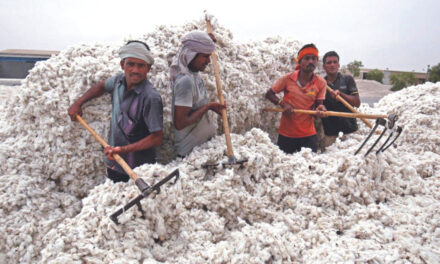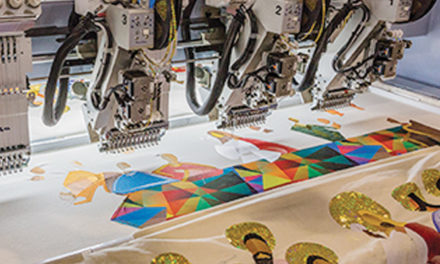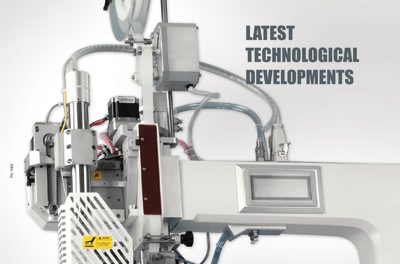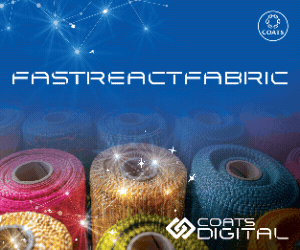Founded in 1980 as a trading company dealing in textile chemicals, since then the company has transformed itself into a global manufacturer and supplier of chemical products for textile, clothing and garment finishing, hospital hygiene, commercial and hospital linen cleaning, institutional cleaning and sanitization, bakery ingredients and food additives etc. and it now boasts presence from a tiny Arab Emirate of Dubai to all over the world, having a world class R&D laboratory and product innovation Centre in association with Atlantic Care Chemicals, Canada and manufacturing facilities in India, UAE and Malaysia, offices and representative offices spread across 30 countries and most of the continents.
Atlantic as a global speciality chemical company strives to be at the forefront for more sustainable, environmental friendly safe products as well as to achieve sustainability in its application and process. Combine its unique competency in chemical engineering and molecular biology offers innovative solutions to create sustainable value to its customers, employees and stake holders. Its plants are GMP and ISO 9001 certified and the products in textile and garment segments are certified for GOTS version 5, Green screen and registered with ZDHC.
Intuitive framework on sustainability
When we produce materials, they are designed in such a way that they can be easily extracted from the environment and avoid the various negative impacts on environment. The thing about environmental folklore is they tend to be based on experiences of our earlier generations, the things we’ve heard from them. These folklores don’t tend to be based on any scientific framework. The choices that we make, as individuals in every single job that we have, no matter how high or low you are in the pecking order, have an impact on all of these systems. We have to find ways if we’re actually going to address sustainability of inter-locking those complex systems and making better choices that result in net environmental gains.
What we need to do is to “learn to do more with less.” Essentially, everything that is created goes through a series of life cycle stages, and we use this scientific process called- life cycle assessment or life cycle analysis – in order to have a clearer picture of how everything that we do in the technical part of the system which affects the natural environment. So we go all the way back to the extraction of raw materials, manufacturing, packaging, transportation, their uses and down to the end of life. At every single stage we do have an interaction with the natural environment and we can monitor, how that interaction is actually affecting the systems and services that makes life on earth possible. By this scientific analysis we will be able to bust a bunch of myths.
The phrase “bio degradability” is the most used phrase when we are talking about sustainability. But biodegradability is just a material property and not a definition of environmental benefits. For e.g. when something natural, something that’s made from a cellulose fibre, or a slice of bread, or any food waste, or even a piece of paper, ends up in the natural environment, it degrades normally, It’s little carbon molecules, that it stored up as it was growing, are naturally released back into the atmosphere as CO2, but this is a net situation of a life-cycle.
Product functionality or life cycle assessment?
The functionality of a material defines the environmental impact, where obliviously the reusable is more beneficial. We need to find smarter, and more systems-based innovative solutions to these problems, if we’re going to start living sustainably in this world. We can start radically altering the sustainability agenda where consumption is the biggest problem and intelligent product designing is one of the best solutions.
Intelligent product designing:
- Design a product with maximum possible organic raw materials that will get exhausted within the process itself
- Design products with safe environmental benign substance like natural products, sustainable organic chemicals, fermented or synthesized biochemicals etc.
- Design of energy-efficient products. (Low temp and fewer rinses)
- Focus on the prevention of chemical waste in letout water. This goes far way better than generating the waste which can be treated
- The product should be designed in such a way that the waste generated should possess little or no toxicity to human or aquatic environment
- Products should be designed to preserve efficacy of function while reducing toxicity
- Energy requirements in processing should be recognised and minimise as much as possible considering economic and environmental impacts
- From raw materials to finished product designing – it should be renewable rather than depleting where ever technically and economically practicable
- Selection of bio-catalytic agent (as selective as possible) are superior to stoichiometric reagents. This concept is called environmental xenobiotic
- Products should be designed in such a way that at the end of their function they do not persist in the environment and break down into innocuous degradation products
- The substance and form of substance chosen for designing product should minimise potential for chemical accidents by release, explosion or fires
- While designing the product attempts are made in all possible angle, not only to quantify the greenness of ingredients but also to factor in other variables such as chemical yield, cost of reaction components, process cost, chemical safety in handling, hardware demands, energy profile and
ease of product application, purification from environment etc.
Keeping with its mandate we have coined the concept Green Chemistry to induce sustainable, low carbon, safe product development in the context of new global sustainability challenges in the fashion industry. It’s by undertaking initiatives in developing and implementing products, synthetic process systems and policies that encourage environmentally responsible fashion thoughts. It includes policymaking, improved industrial production processes, resource-efficient productivity management, complete realisation of energy to initiate low carbon foot prints etc. Apart from this systematic training to create awareness, knowledge and capacities about sustainable processing and safe handling. We work with manufacturing units and process houses to train the professionals to trigger the thoughts for sustainable products and process methods, providing technical knowledge for adopting resource efficient process management by taking care of materials, energy, water, waste water, minimise generation of waste and emissions and foster safe and responsible production.
Sustainable products by green chemistry:
Sustainable chemistry, termed as “green chemistry,” aims at an improved efficiency of using natural resources for textile and garment wet processing. It’s our resolve to design and develop high performance chemical products from environmentally benign bio and organic chemicals. One major aspect of it is biological persistence focusing on the replacement or degradation of xenobiotic in the environment. The “environmental xenobiotic” is summarised as the strategies to use single bacterial isolates or microbial communities for the development of products which can substitute the arrival of xenobiotic pollutants in the environment. The complexity of replacing xenobiotic by selectively identifying the catabolic potential of microbes and detecting its application relevancy in the set conditions (i.e. systems/procedures) of textile and garment processing need strenuous and meticulous research. We worked tirelessly with an interdisciplinary approach for developing microbial strains to design cost efficient substitutes of potential pollutants or xenobiotic for a safe and risk free fashion business.
In contrast to non-sustainable and non-renewable stoichiometric chemicals, oxidants with potential risk of exposure to handling storage and transportation, fossil fuel and polymer based products, synthetic resins etc., we have introduced green chemistry with highly-efficient (fewer steps, fewer resources, less waste) and stable under ambient conditions, much more eco-friendly non altered microbial enzyme based (platform chemicals) products, synthesized natural organic products and synthetically developed renewable molecule compiled with bio chemicals etc. Green chemistry helps to deal with the bitter pills of garment / textile wet processing.
Which are:
- Manufacturing toxicity
- Heavy metals and other xenobiotic elimination
- Reduction on utilities
- Not hurting nature
- Prevention of waste formation
- Create new knowledge pertinent to sustainability
Take on both life cycle and functionality based approach to reduce potential risk throughout the process.
Surfactants are Toxic!
Surfactant free processing
When we pursue for “Zero Discharges of Hazardous Chemicals” the major thing we need to address is elimination of surfactants and polymers going to the water treatment system. Surfactants/ polymers like anti back-staining agent, wetting agent, lubes and demineralizing agents are toxic to environment and very hard to extract it back from environment. These were responsible for a significant portion of the toxicity of the effluent. Procedures provided additional evidence that these compounds were important determinants of toxicity of the POTW effluent. Measurement of two general classes of surfactants in the test effluent (anionic ABS, nonionic, wetting) indicated that there were sufficient concentrations of these compounds to be of toxicological concern. The identification of surfactants as potentially important toxicants in a primary effluent is not particularly surprising in light of their concentrations in untreated or inadequately treated wastewater. Since these components are not exhausted or consumed in the bath, it creates complete load for the effluent. Foaming associated with usage of surfactants in activated sludge process is a common operational problem in many wastewater treatment plants. The foam can occur in aeration tank, secondary clarifier, as well as in anaerobic digester. Foam in WWTP is normally sticky, viscous and brown in colour.
It floats and accumulates on top of the tanks, and can take up a large fraction of solid inventory and reactor volume, thus decreasing the effluent quality and control of sludge retention time (SRT). The foam can also overflow onto walkways and surrounding areas, posting severe difficulties and risk to operation and environment. Many reasons are associated with foaming: Presence of slowly biodegradable surfactants like ABS, lube, excess production of extracellular polymeric substance (EPS) by activated sludge microorganisms under nutrient-limited condition, proliferation of filamentous organisms and gas provided in aeration tank or produced in anoxic zone of aeration tanks, secondary clarifiers and anaerobic digesters. Stable foaming in WWTP is the product from interaction among gas bubble, surfactant (ABS, wetting and sequestering) and hydrophobic particles from Lube. The hydrophobic particles congregate at the air-water interface and strengthen the water film between air bubbles. Meanwhile, the particles also serve as collector for surfactant which stabilises the foam. Gas bubbles in WWTP are generated by aeration, mechanic mixing and biological process like DE nitrification and anaerobic digestion.
Risks associated with the application of genetically Modified Enzymes:
The arrogance and economic vestedness of science in GMO technology for the development of high performance enzymes for textile and garment finish applications became another serious issue to be addressed for the sustainability of eco system and human health. The innocuousness’ of GMO enzymes pertinent to safe discharge and use has been over eulogized though the vicissitudes are kept pending for study.
The application of genetically modified microorganisms experimental work in risk assessment does not always fit the guidelines presented by regulatory agencies. To provide a framework as a basis for both risk assessment research and regulatory agencies for decisions on releases, a flow scheme must present containing key processes controlling fate and thus putative risk. It is suggested that the fate of the GMO has to be investigated at first in contained microcosms mimicking the environment in comparison to the natural wild-type microorganism. Inoculant survival, competition, gene transfer and translocation are key parameters to be investigated in case of a wanted release.
Based on economic interest, the GMO should fitter than the wild-type, which might result in displacement of this species. Localization of the genetic element in the genome is a key factor affecting gene transfer. The most difficult point to address is the possible effect of the GMO on ecosystem functioning and diversity. The application of Biological Containment Methods, such as via the use of inducible killing genes, will put a time limit on the possible hazard of GMO introductions. The major risk factors which can potentially affect human and eco system are pointed below.
- Gene mixing – sanctity of species
- Human health effects as gene escapes and can generate new breed of potential pathogens
- Escape of gene can ruin ecology
- Damage the resistance and sustainability of ecology
- Non-organic and clueless method
- Effect on non-target species
- Generation of super weeds and pathogens
- Transferred genes could mutate and cause unexpected risks
- Bio diversity could negatively affected by destruction of other microbes, weeds and even competing microbes
- Cross species formation could spread highly resistant genes and could create super pathogens.
Genetically engineered enzymes have DNA from bacteria, fungus or virus spliced into its DNA to help it tolerate extreme conditions or accelerating performance. The incriminated outbreak of these creates a whole new species of microbes that have never occurred in nature and the vicissitudes are unknown.
The genetically engineered enzymes had its DNA artificially altered in the laboratory by genes from other bacteria, virus or other unicellular organisms in order to enhance its property. This type of genetic alternatio is never found in nature and it can be too detrimental can ever thought of.
Immobilized enzymes
The risk associated with the usage of native species without being genetically modified (GMO) is their performance in application. This can be regained by the immobilisation of enzymes. This will impart increased resistance to the unfavourable conditions like high pH, variable temperature, reduced mobility to avoid going frenzy during process etc.
This is done by attaching inert, insoluble material (sodium alginate) to the enzyme protein. This can provide increased resistance to changes in conditions such as pH or temperature. It also lets enzymes be held in place throughout the reaction, following which they are easily separated from the products and may be used again – a far more safe and efficient process to substitute GMO products and bio catalysts.
- More convenient handling of enzymes
- Low back-staining, as hydrophobic immobilisation particle act as ABS in process
- PH, temperature and mild oxidative bleach resistance
- High strength retention
- Better results in low concentration
- Minimize or eliminate protein contamination
- Efficient use of enzymes
- Enhanced stability and improved performance
- User friendly – active in both acidic and neutral conditions
Like an icing on the cake you would find it interesting to know, as part of Atlantic innovations, that the concept of physics such as motion, energy, force, time and fluid physics like “stable dry foams,” colloidity etc. play an important role while chemistry does its job in a wet process.
However, applying physical methods to chemical concept is an idea which has remained confined to the drawing of electricity and running of equipmentcomponents in textile/garment processing industry. The interrelation of these two subjects and usage of this relationship, if exploited further, are bound to bear unprecedented result in textile processing and garment washing industry. Our product-line reflects this intelligent thought used in bringing in sustainability.
In tune with our mission of restoring the creation of mother nature and preserving the invaluable gifts of finite natural resources like pure water and clean air, our R&D keeps on its efforts on developing sustainable products from the agro waste materials (“filth to wealth), products which works on low energy and can amalgamate the process, complete elimination of inorganic alkali and surfactants, eliminating chemicals of halogen derivative (AOX, TOX), synthetic process methods supports high productivity, limiting the usage of finite resources like water, energy etc.
Adhering to our resolve to meet the norms of ethical fashion, we strive hard to create a world environmentally greener and safer place for the generations to live. Our responsibility towards growing concerns on human health and environmental safeguards stand best reflected in the fact that Atlantic care chemicals deals only with organic, green screened and ZDHC certified chemicals.


















